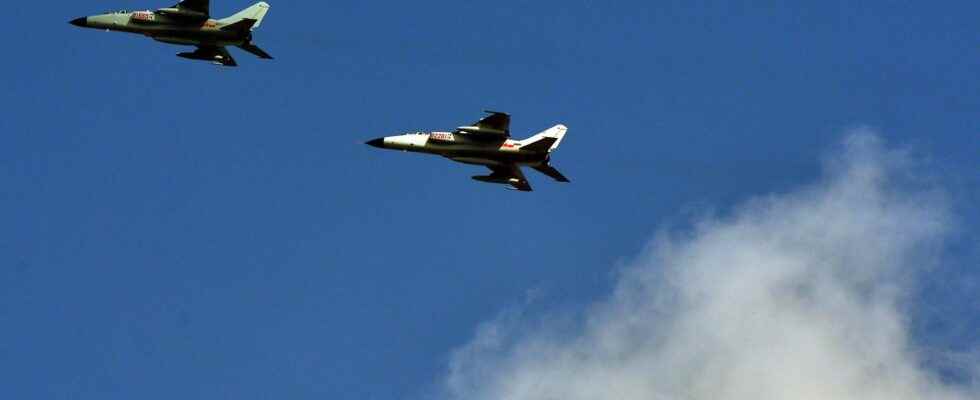It’s one of China’s biggest daily forays to date. Beijing has deployed 71 combat aircraft during military maneuvers around Taiwan, the Taipei Defense Ministry said on Monday (December 26th). These military exercises were conducted on Sunday, December 25. According to the Chinese army, they are “a firm response to the growing collusion between the United States and the Taiwanese authorities and their provocations”, the People’s Liberation Army (PLA) said.
In a message posted on Twitter, Taiwan’s Defense Ministry said 60 fighter jets took part in the exercises, including six SU-30s, among China’s most advanced aircraft. In this daily update, Taiwan further indicates that 47 of these planes entered the air defense zone (ADIZ) of the autonomous democratic island, which constitutes the third largest daily incursion recorded, according to the database. AFP data.
“This behavior of the Chinese Communist Party once again highlights its mentality, which is to use force to settle disputes and undermine regional peace and stability,” responded the Taiwanese Ministry of Defense.
For its part, Beijing did not specify the number of devices mobilized for the exercises on Sunday, nor the exact location of these maneuvers. The PLA, however, released the photos of a bomber, a warship and an aerial landscape showing, from an airplane cockpit, what is said to be a mountain range in Taiwan. This last shot intends to emphasize that the device approached relatively close to the Taiwanese coast.
More than 1700 incursions of this type recorded in 2022
Under President Xi Jinping, Beijing has stepped up military, diplomatic and economic pressure on Taiwan as relations deteriorated. One of the means of pressure increasingly used by China is to fly over the air defense zone of Taiwan with its warplanes. Since the beginning of 2022, more than 1,700 incursions of this type have been recorded, compared to 969 in 2021 and 146 in 2020.
Data from the Taiwanese Ministry of Defense indicates that most of the incursions were on the southwestern tip of the ADIZ. Some have also crossed the “median line” which runs along the Taiwan Strait and separates Taiwan from the mainland. Flights in the ADIZ are seen as a way to deplete Taiwan’s aging fleet of fighter jets and study its defensive responses.
Many nations maintain ADIZ, including the United States, Canada, South Korea, Japan, and China. These zones are not identical to a country’s airspace, but encompass a much larger area, in which any foreign aircraft are expected to report to local air authorities. Taiwan’s ADIZ overlaps part of China’s and even includes a portion of the mainland.
Beijing’s opposition to a US defense law
China considers Taiwan, with a population of 24 million, to be one of its provinces, which it has yet to successfully reunify with the rest of its territory since the end of the Chinese Civil War in 1949. The Chinese authorities favor “peaceful reunification” with the island but have never renounced the use of force to conquer it, especially if it declares its independence.
Beijing sees with dissatisfaction the rapprochement at work in recent years between the Taiwanese authorities and the United States, which has provided the island with military support against Beijing for several decades. The rapprochement with Washington, begun under former US President Donald Trump, has therefore contributed to straining Sino-US relations, as the United States has officially committed to recognizing the communist government in Beijing as the sole legitimate representative of China. .
On Saturday December 24, the Chinese Ministry of Foreign Affairs had expressed its “firm opposition” after the adoption of an American defense law, the “National Defense Authorization Act”, which notably authorizes 10 billion dollars in military aid and arms sales to Taiwan. For its part, the Taiwanese Ministry of Defense stressed that “cooperation between Taiwan and the United States contributes to freedom, openness, peace and stability in the Indo-Pacific region”.
In August 2022, the PLA had already carried out very important military exercises around Taiwan, an unprecedented show of force, in retaliation for a visit to the island by the speaker of the American House of Representatives, Nancy Pelosi. Chinese diplomacy considered this gesture as a provocation.
